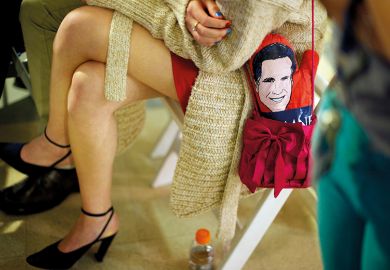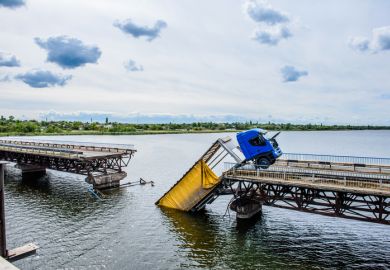Stanford University has agreed to investigate research misconduct allegations involving papers on which its president served as an author, although outside experts are sceptical that he was involved in any clear violations.
The complaints concern possibly manipulated images in at least four papers at least a decade old, and for which the now-president of Stanford, Marc Tessier-Lavigne, was not believed to be personally responsible for handling.
Yet the university “will assess the allegations”, said a Stanford spokeswoman, “consistent with its normal rigorous approach by which allegations of research misconduct are reviewed and investigated”.
Given that the case involves the institution’s president, the process will be overseen by the university’s board of trustees, the spokeswoman said.
Professor Tessier-Lavigne, in a statement, said he backed the idea of a university investigation. “Scientific integrity is of the utmost importance both to the university and to me personally,” he said.
The papers include two published in the journal Science, one in Nature, and one in The EMBO Journal. Professor Tessier-Lavigne is a Canadian-born neuroscientist who served as lead author on at least two of those papers.
The EMBO Journal’s publisher agreed to look into the matter after complaints were posted this past week on PubPeer, an online site for raising matters of research integrity.
The matter was then amplified by the university’s student newspaper, The Stanford Daily, which contacted research integrity experts who agreed that inconsistencies in images in the journal articles depicting outcomes of experimental results could have been accidental, but warranted further investigation.
Some concerns over journal articles involving Professor Tessier-Lavigne were raised publicly prior to his appointment as Stanford’s president in 2016, but did not lead to any retractions.
One of the experts consulted by the Stanford student newspaper, Ferric Fang, professor of microbiology at the University of Washington in Seattle, said he agreed that some of the images in the cited articles do “look problematic”.
“But I would be careful about drawing conclusions about misconduct versus error,” Professor Fang told Times Higher Education. “It is difficult to reach firm conclusions about most data anomalies without a review of the primary data.”
In addition, any errors in the images are the primary responsibility of the person who generated the data, which was most likely not Professor Tessier-Lavigne, Professor Fang said. The age of the articles would also make it difficult to assign any culpability, he said.
Register to continue
Why register?
- Registration is free and only takes a moment
- Once registered, you can read 3 articles a month
- Sign up for our newsletter
Subscribe
Or subscribe for unlimited access to:
- Unlimited access to news, views, insights & reviews
- Digital editions
- Digital access to THE’s university and college rankings analysis
Already registered or a current subscriber?








